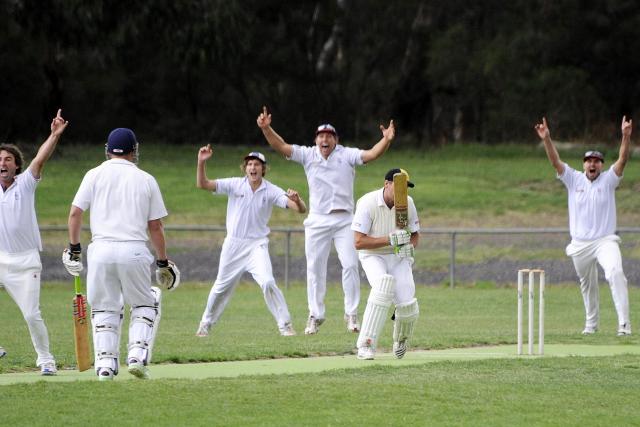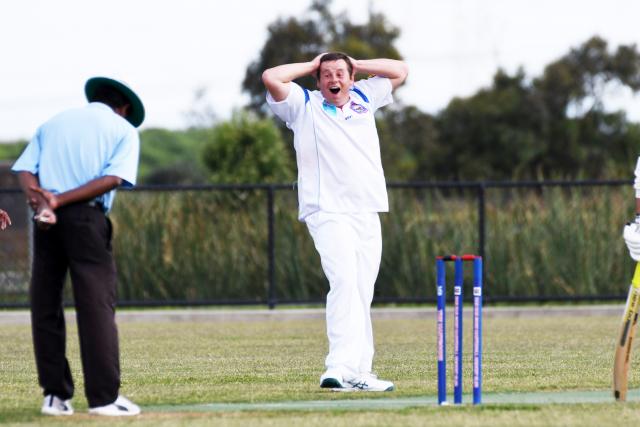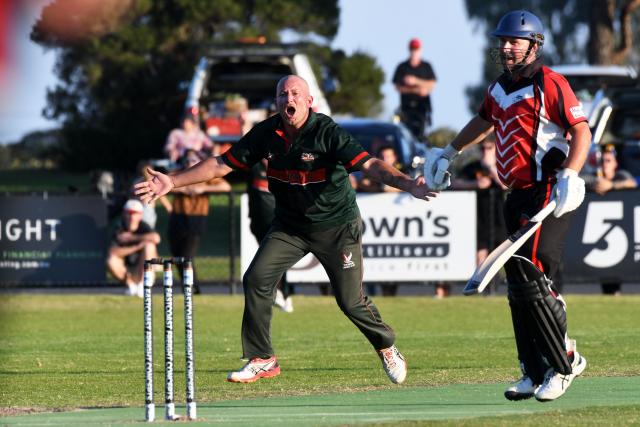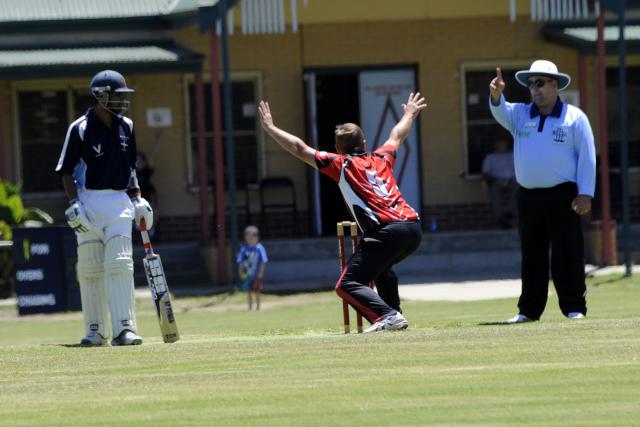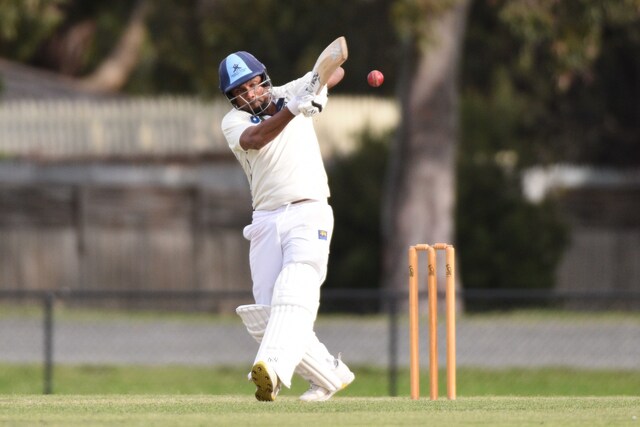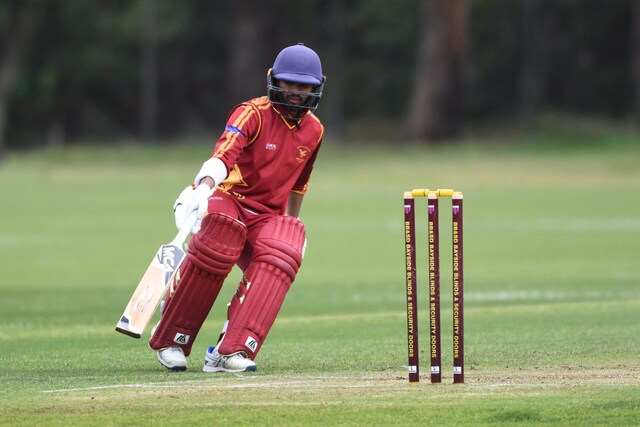He’s been patrolling the outfields of local cricket grounds for the best part of 25 years, but STAR NEWS Photographer STEWART CHAMBERS will occasionally put his lens down and turn his hand to writing.
In his latest article, Stewie takes a look at the age-old art of appealing for an LBW.
‘Howzaaatttt!!?’ is the raucous plea from the bowler for LBW.
The batter’s fate now rests with the index finger of the umpire…some are trigger-quick in their decision making while others give it an agonising theatrical pause.
Does the appeal in any way hold sway over the bearing of the outcome?
The wicket-keeper usually goes up helping out a questioning bowler.
If the entire slips cordon also goes up, it puts added pressure on the batter who is shuffling across the crease?
He or she is desperately sending vibes of ‘nothing to see here’, but really thinking ‘I might be in more trouble than the early settlers’.
If all 11 fielders appeal – and a few extras from the sidelines -, surely the umpire has to think closely about whether the batter goes back to the sheds, shaking his or her head whilst whipping off the gloves and helmet.
The other choice is facing disbelief and the wry smile from the bowler.
Last weekend at Cardinia the first ball of the day was appealed, nothing like putting pressure or perceived pressure on the batting team from the get-go.
Tommy Tyrell got Pakenham off to the perfect start with the first wicket of the day…a leg before wicket.
In the first hour of play the game was sprinkled with appeals.
In the fictional book Cricket Kings, the team hilariously appeal in Norwegian (if they remember the phrase) to really get the umpire’s attention.
I’ve heard one umpire at the local level explain a not out LBW, at the end of the over, walking to square leg muttering, “He hit the ball with his bat…unless he’s got a wooden leg!”
If you get down on one knee – not proposing to the umpire – and raise your index finger to show him it’s not that difficult to send the batter on their way, maybe that’s what’s needed.
The umpy may require some extreme volume in the plea, and the look of a crazy man, to finalise the decision.
I mean he was plum, why is he still standing there!
So, are the bowlers trying to influence or even bluff the men in the blue shirts, or are they on occasion genuinely a bit ripped off?
Even at the elite level the DRS sometimes seems to get it wrong.
When Adam Zampa appealed for an LBW the ball tracker sent the ball spinning nearly at right angles from where it pitched.
Marnus Labuschagne couldn’t control his laughter at ‘technologies’ take on the decision.
Around the local leagues Tooradin’s Russ Lehman is pretty good at asking the question.
Kooweerup champion Chris ‘Tubsy’ O’Hara thinks the appeal is a great component of the game.
“You have to show confidence in your appeal, and just maybe the umpire gives it out,” O’Hara said.
“I love the tradition of the appeal, the human nature element of the game.
“In the lower grades when I umpire, I raise the finger and say ‘sorry mate’ as one of my own teammates is on his way.
“I recall Shane Dole being pretty good at appealing; he’d give it the complete Dennis Lillie look.
“I think it’s a great part of the game, a bit of the rub of the green at times, but that’s the way it is”.
Bradey Welsh has the perfect view from behind the stumps at Cardinia.
“Appealing and LBW is one of those things in cricket that will always divide people,” Welsh explained.
“Personally, I think if the ball hits you and is going on to hit the stumps then you should be out….regardless of if it pitches outside leg or not.
“I think it comes down to the type of cricketer the umpire was also.
“I’ve noticed in the lower grades, the bowler who umpires tends to go up with the fielding team when they appeal, and the batters who umpire tend to be a bit more lenient.
“I think that speaks to the mental element of the LBW and how you look at the game as a player.”
Welsh said he and other wicketkeepers play a key role in the appeal process.
“As a wicket keeper you have a great view, and you need to be the one who leads the way when you appeal,” he said.
You are directly in the umpire’s line of sight, behind the batter who has been struck, so you need to be confident…confidence in your appeal is everything.
“Your footwork also gives the umpire a gauge on the direction the ball may be travelling, as you should be reacting early to the line or shape of the ball out of the bowler’s hand.”
“And good sides appeal in unison – all of those little things do come into it.”
So, there it is…LBW is a great part of the game and if you don’t ask the question…you will never know the answer.
“How was that?????”

